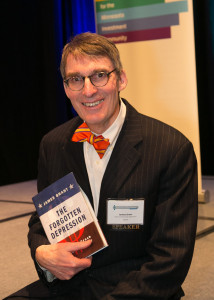By Tom Halloin, CFA Society Minnesota Intern
Investors are increasingly turning their attention toward behavioral finance in order to find an edge in the markets. On March 4th Dr. Sergey S. Barabanov, a professor at the University of St. Thomas, spoke to CFA Society members about classic repetitive mistakes investors frequently make and ways to avoid them in the future. The data show, for instance, that investors hold on to their losing positions for far too long and sell their winning positions far too soon. This is because investors are much more likely to feel pain from losing money than they are to feel euphoria from gaining that same amount. In addition, trading frequently statistically leads to lower returns over time. Dr. Barabanov suggests examining behavioral sentiment after quantitatively screening for companies with a large, unexpected increase in earnings per share, and then using fundamental analysis to determine whether this earnings increase is sustainable. After screening using fundamental analysis, he also recommends examining market sentiment and capitalizing on earnings overreactions. One final suggestion he gave was to watch out for falling airplane parts. A person is 30 times more likely to die from a falling airplane part than to die from a shark attack. And while it is highly unlikely for either of these events to happen, the anecdote is a clever one that reminds investors to be aware of their emotions and biases when making investment decisions.










